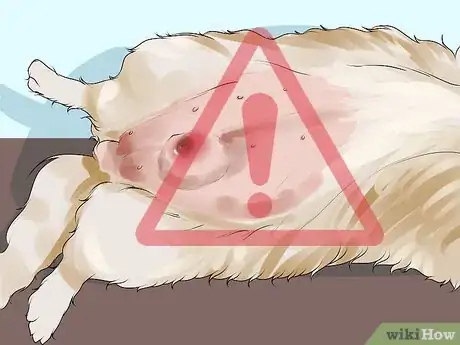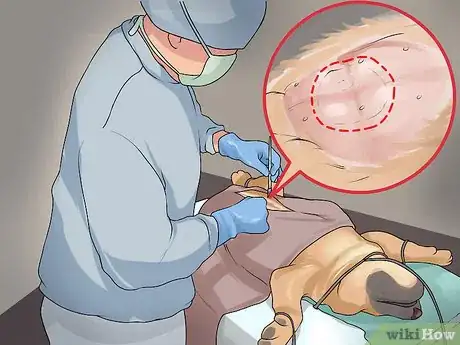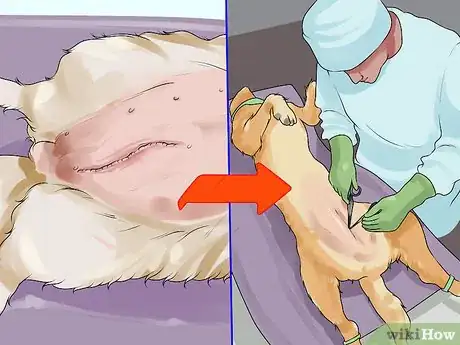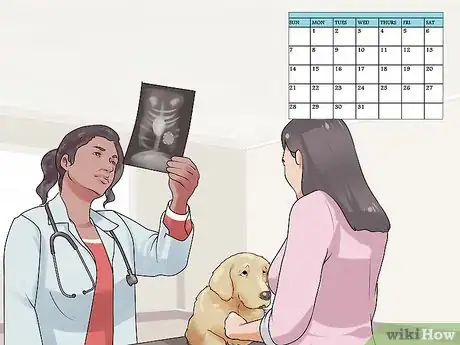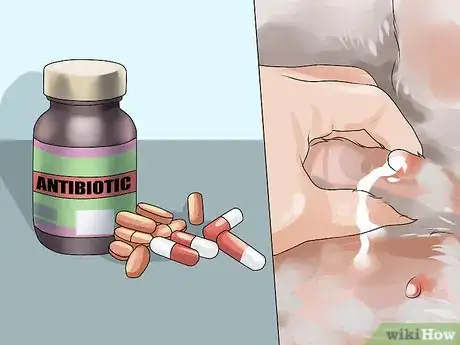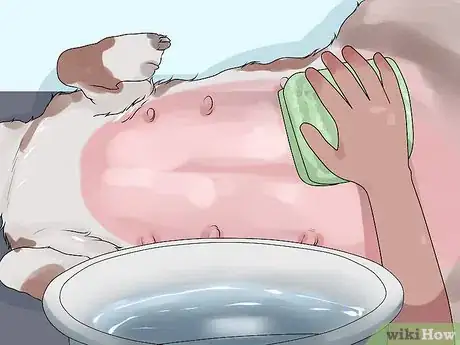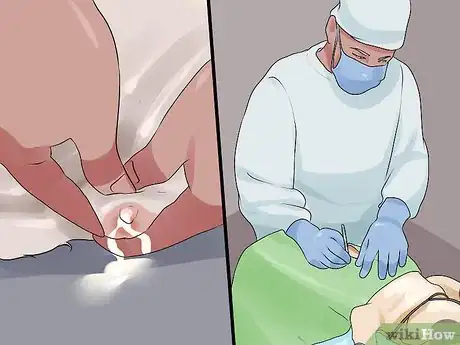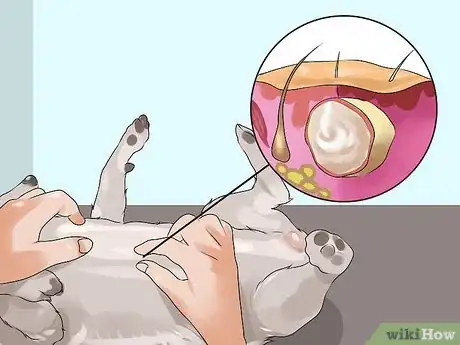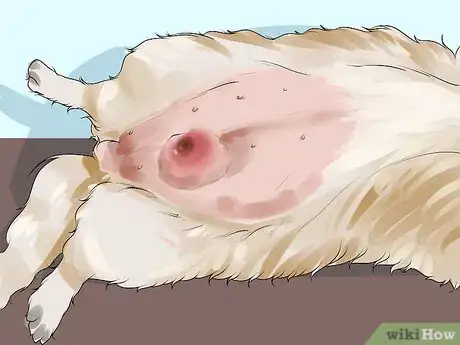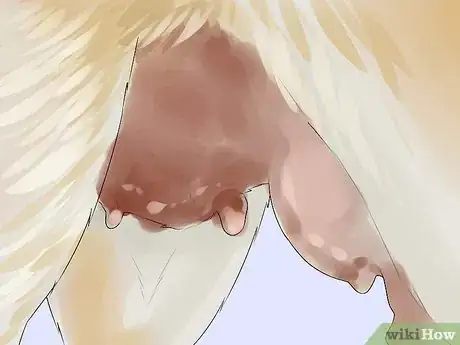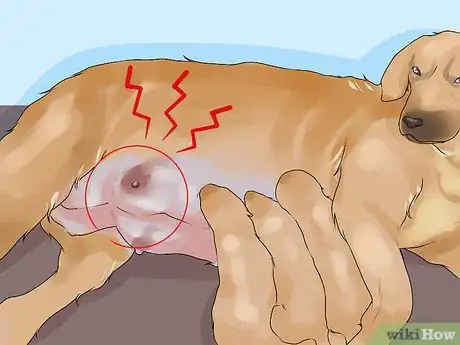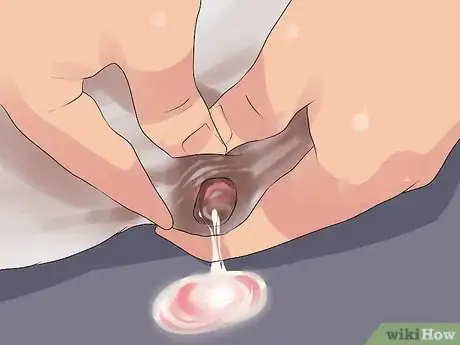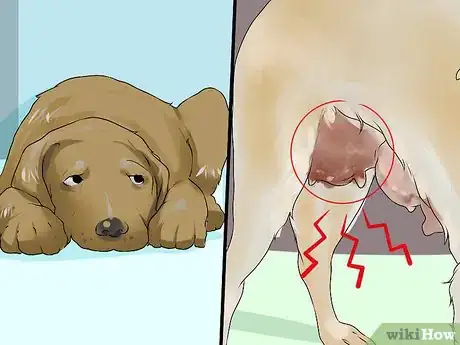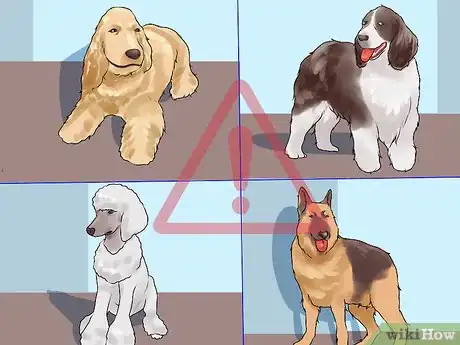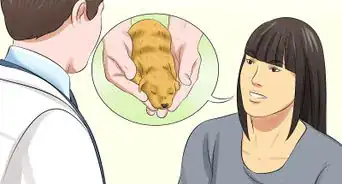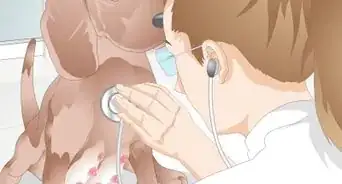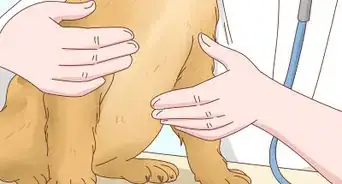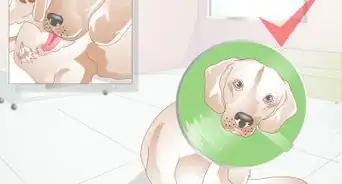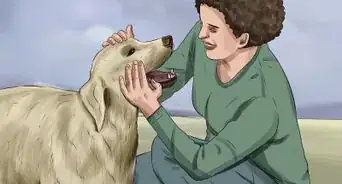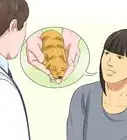This article was co-authored by Pippa Elliott, MRCVS. Dr. Elliott, BVMS, MRCVS is a veterinarian with over 30 years of experience in veterinary surgery and companion animal practice. She graduated from the University of Glasgow in 1987 with a degree in veterinary medicine and surgery. She has worked at the same animal clinic in her hometown for over 20 years.
This article has been viewed 35,070 times.
Mammary gland diseases can occur in female dogs who have not been spayed or were spayed after their second season. Mammary gland tumors can occur in the middle of or later in a female dog’s life, while mastitis occurs while the dog is lactating. To treat mammary gland diseases, notice symptoms that something is wrong with the glands. If your dog has a tumor or tumors, the vet can remove them. To treat mastitis, the vet will more than likely give the dog antibiotics.
Steps
Treating Mammary Gland Tumors
-
1Check the mammary glands in your female dog. Mammary gland tumors can occur in any of the mammary glands in your dog. It can also occur at any time, before or after they have given birth or while they are lactating. Check your female dog often for any irregularities.
- Most often, mammary tumors occur in the back glands, nearest the hind legs.
- Half of the time, more than one tumor is found.
-
2Remove the tumor. One way you can treat a mammary tumor is to remove the tumor surgically. This can be done by removing just the tumor or removing the gland. If the tumor has started to spread, the vet may choose to remove the gland and surrounding lymph nodes. In extreme cases, the vet may remove all of the mammary glands.[1]
- The type of tumor and the location will influence what your vet decides to do.
Advertisement -
3Get the dog spayed. After the tumors are removed, the vet will more than likely spay your dog. This helps reduce the risk of ovarian and uterine tumors.
-
4Provide follow up care for your dog. After the surgery, you will need to continue taking your dog to the vet for follow up care. Your vet will perform physical exams and x-rays to check for any changes in the mammary glands or signs of additional tumors.[2]
- You will probably have to take your dog to the vet one month after the surgery, and then once every three months after that.
Treating Mastitis
-
1Get your dog antibiotics. If the dog is suffering from mastitis, the vet will probably prescribe antibiotics to treat the infection. The antibiotics given to your dog will depend on whether or not the puppies have been weaned.
- To choose an antibiotic, the vet will need to collect milk for a culture. This will help them know exactly which antibiotic is appropriate for your dog.
-
2Place a warm compress on the affected glands. When your dog has mastitis, you can place a warm compress on the glands multiple times each day. This helps to relieve any pain or discomfort in the glands.
- This will also help the glands to drain the infection.
-
3Have the gland lanced. In severe cases, the mammary gland abscesses. If this happens, the gland will have to be surgically lanced by a vet. The vet will drain the infection from it. Then, the site of the lancing will be treated as an open wound.[3]
Recognizing Symptoms of Mammary Gland Diseases
-
1Notice any lumps in the mammary glands. Lumps or swelling in the mammary glands is a symptom of mammary tumors. They can be felt just under the skin in the mammary glands area. To check for them, just gently press along the area.
- You may feel a small, hard, or smooth lump under the skin that moves around when you press it. The other type may be irregular in shape and feel like it’s fixed in the skin so it doesn’t move.
-
2Look for red or swollen glands. If your female dog has mammary gland tumors or mastitis, then the area around the mammary glands will be red or pink. The area may be swollen, and often, it is warm or hot when you touch it.
- Because of this, the dog may experience pain or discomfort when you touch the area.
-
3Look for any irregularities to the skin around the mammary glands. Another symptom of mammary gland tumors is tissue loss on the skin of the mammary glands. This generally occurs with swollen or reddened skin.[4]
- With mastitis, puppies may scratch the mammary glands, leading to infection of the glands.
-
4Check the dog’s nipples while lactating. Mastitis is an infection that can occur when a female dog is lactating. The nipples may be swollen and sore, which causes the dog to avoid nursing. This can lead to delayed development or poor nutrition for the puppies.
- The nipple gets infected during mastitis, so the redness, swelling, or pain may be more apparent in the nipple than surrounding glands.
-
5Notice any abnormalities in the milk. If the dog has mastitis, the nipples get infected, which affects the milk. The milk from the nipples may be a different consistency and thicker than normal milk. It may also be full of pus.[5]
- In some cases, the milk is bloody or has a pink-tinge.
-
6Check for any sickly behavior. If a dog has mastitis, then the dog may act normal and healthy. However, mastitis can cause the dog appear sick. She may have a fever, refuse to eat, or overall seem lethargic or listless.[6]
- In some cases, the female dog may neglect the young due to feeling sick or the glands being too painful to touch.
-
7Recognize risk factors for mammary tumors. Mammary tumors can occur in a female dog over one year. However, it is not common until after age five. Certain breeds are more prone to mammary cancer than others. These include:
- Toy and miniature poodles
- English springer spaniels
- Cocker spaniels
- German shepherds
- Yorkshire terriers
- Maltese
- English setters
References
- ↑ http://www.merckvetmanual.com/mvm/reproductive_system/mammary_tumors/overview_of_mammary_tumors.html
- ↑ http://www.petmd.com/dog/conditions/cancer/c_dg_mammary_gland_tumor?page=2
- ↑ http://www.merckvetmanual.com/pethealth/dog_disorders_and_diseases/reproductive_disorders_of_dogs/reproductive_disorders_of_female_dogs.html
- ↑ https://www.addl.purdue.edu/newsletters/2007/Fall/FinalDX.html
- ↑ http://www.uskbtc.com/about-kerries/health-genetics/mammary-disorders-of-the-bitch/
- ↑ https://www.acvs.org/small-animal/mammary-tumors
About This Article
To treat mammary disease in an intact female dog, it's important that you take it to the vet so they can recommend the best treatment plan. If your dog has mammary gland tumors, the vet may recommend removing the tumors surgically. They'll also probably spay your dog to prevent future tumors. Alternatively, if your dog is suffering from mastitis, the vet will most likely prescribe antibiotics. You can also apply a warm compress to your dog's glands several times a day to help relieve some of its pain and discomfort. For tips from our Veterinary co-author, like how to recognize mammary gland disease, keep reading.
